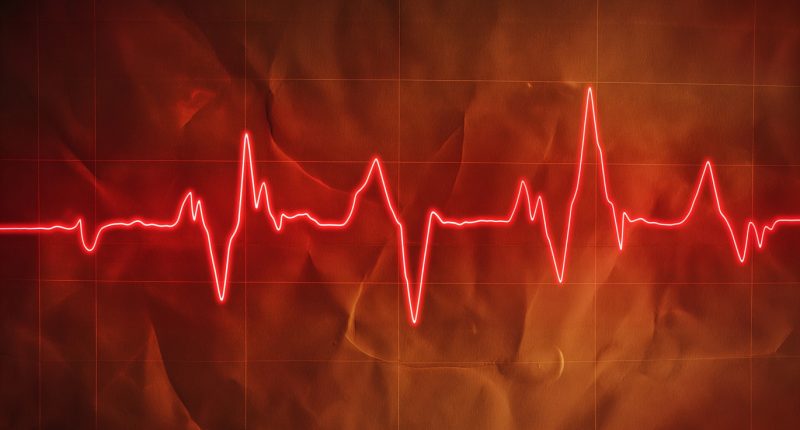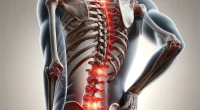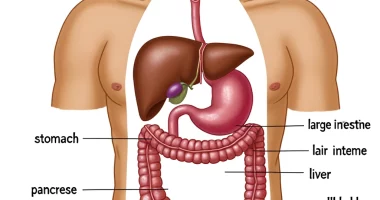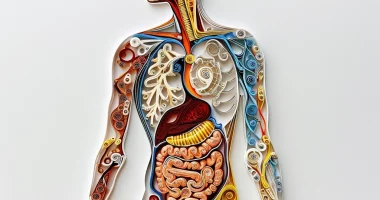Myocarditis
What’s that?
Myocarditis is an acute or chronic inflammatory heart muscle disease characterized by nonspecific symptoms. It is an independent pathology, but sometimes it develops due to other diseases against their background. It can end in spontaneous recovery, lead to chronic heart failure, or cause sudden death of the patient. Attentive attitude to your health and visiting a doctor at the appearance of the first symptoms and signs of myocarditis will help to avoid an adverse scenario and keep your heart healthy for a long time.
About the disease
Myocarditis is widespread and accounts for almost one-third of all non-coronary heart diseases. Due to the non-specific symptoms, some cases of this pathology remain unrecorded – only after a while objective signs of previously transferred myocardial inflammation are accidentally detected.
Myocarditis mainly affects young adult patients (20-40 years old), men somewhat more often than women.
Classification
Depending on the causes of the disease, such types of myocarditis are distinguished:
- infectious (viral, bacterial, caused by fungi or protozoa);
- non-infectious (toxic, allergic, autoimmune);
- idiopathic (the causative factor remains unclear even after examinations).
If inflammation of the heart muscle occurs as an independent process, it is called primary, developed against the background of another disease, or as a consequence of it – secondary.
According to symptoms prevalence acute, subacute, and chronic types can be distinguished, according to the prevalence of inflammation in the myocardium – focal, confluent, and diffuse, according to the degree of activity – active and borderline myocarditis.
In 2009, the Japanese Society of Cardiology developed a classification of myocarditis based on the clinical course and histologic changes in heart muscle cells. According to it, the following forms of the disease are distinguished:
- fulminant (characterized by vivid symptoms, rapid progression of the process with the formation of a large number of inflammation foci and areas of tissue necrosis in the myocardium; within two weeks, the process ends with recovery or death of the patient);
- subacute (clinical picture of the disease is smooth, the activity of the inflammatory process is expressed moderately; left ventricular volume is increased, myocardial contraction capacity is reduced – dilated cardiomyopathy is formed);
- chronic active (the onset is clinically subtle, the course is prolonged, left ventricular function is moderately reduced, restrictive cardiomyopathy gradually develops);
- chronic persistent (debuts indistinctly, inflammation persists for a long time, signs of infiltration and areas of cell necrosis are determined in the heart muscle, ventricular function is preserved, the prognosis is relatively favorable);
- giant cell myocarditis (the most severe, therapy-resistant form of the disease, characterized by severe heart failure and the development of life-threatening arrhythmias, without treatment for six months leads to death);
- eosinophilic (signs of the inflammatory process and a large number of eosinophils are found in the heart muscle; indicates the allergic nature of the pathology).
Depending on the predominant symptoms of the disease, myocarditis can be:
- pseudo-coronary;
- arrhythmic;
- accompanied by circulatory disorders;
- thromboembolic (characterized by the formation of wall clots in the heart chambers and their subsequent release into the bloodstream);
- pseudo-valvular;
- asymptomatic;
- mixed.
Symptoms
This disease can proceed with pronounced clinical symptoms, accompanied by rapid, steadily progressive cardiac dysfunction, or characterized by a low-symptom course with nonspecific weak manifestations. Sometimes, it develops suddenly with signs of cardiogenic shock, rapidly leading to sudden death (this variant of the course of the disease is characteristic of athletes).
Symptoms of cardiac myocarditis in adult women and men may include:
- diffuse pain in the left side of the chest;
- pain in the heart region, similar to angina pectoris (stinging, squeezing character, irradiating (recoiling) to the left arm, shoulder blade, lower jaw);
- heaviness in his chest;
- the sensation of heart palpitations;
- increased or decreased heart rate;
- unexplained shortness of breath;
- swelling in the lower extremities;
- abdominal pain;
- stool irregularities;
- general weakness and fatigue;
- muscle pain, joint pain;
- subfebrile body temperature (37.0-38.0°C);
- headache, dizziness to the point of fainting.
Reasons
In most cases, myocarditis is caused by viruses (Epstein-Barr, Coxsackie, influenza, herpes, corona-, entero-, adenoviruses), less often by bacteria (streptococci, Koch’s bacillus, corynebacterium, chlamydia, Hemophilus bacillus, legionella), parasites (Trypanosoma, trichinella, toxoplasma), fungi (candida, aspergillus).
Non-infectious causes of the heart muscle inflammation:
- Potentially allergenic drugs (some antibiotics, sulfonamides, non-steroidal anti-inflammatory and anticonvulsants);
- substances toxic to the heart (cytostatics used as chemotherapy for oncological diseases, drugs);
- autoimmune processes in systemic and endocrine diseases (nonspecific ulcerative colitis, systemic lupus erythematosus, scleroderma, vasculitis, sarcoidosis, diabetes mellitus);
- vaccination against certain infections (particularly smallpox virus).
Under the influence of risk factors, the likelihood of developing myocarditis increases. These are:
- alcohol, drug use;
- acute viral infections;
- chronic foci of bacterial infection of any localization;
- allergic diseases;
- immune system dysfunction;
- thyrotoxicosis.
Diagnosis
There are no specific diagnostic signs that convincingly indicate the presence of myocarditis in a patient. Therefore, diagnosis requires a thorough, comprehensive examination. It includes:
- collection of complaints and anamnesis data (when symptoms appeared, how they changed over time, what worsened and what improved the condition; concomitant diseases, allergies, hereditary anamnesis);
- objective examination (symptoms of myocardial dysfunction may be swelling of the lower extremities, extrasystoles, tachycardia, wheezing in the lower areas of the lungs, increase in heart size);
- laboratory studies (an increase in myocardial antibody titer, increased α2- and ɣ-globulins, positive C-reactive protein, and sialic acids may be detected);
- PCR examination (will help to identify the genetic material of the pathogen);
- electrocardiography (diffusely or locally determined signs of disturbances of excitability, conduction, arrhythmias);
- cardiac ultrasound (heart cavities are dilated, contractility of the heart muscle is reduced, diastolic function of the ventricles is impaired);
- chest X-ray (the picture will show cardiomegaly and signs of blood stasis in the lungs);
- bacterial blood cultures;
- myocardial biopsy by probing the chambers;
- radioisotope study (scintigraphy);
- magnetic resonance imaging of the heart (signs of inflammation in the myocardium).
When the pathology is verified, the cardiologist will prescribe a treatment regimen for the patient.
Treatment
A patient with symptoms of myocarditis is treated in a cardiac hospital. He is recommended complete bed rest for 1-2 months until recovery of the initial heart size and regression of disease manifestations. A vitaminized, protein-rich diet with salt and fluid intake restriction is also indicated. Drug therapy may include drugs from such groups:
- antiviral, antibacterial, antifungal, antiparasitic (depending on the causative factor of the disease);
- antihistamines;
- non-steroidal anti-inflammatory drugs;
- glucocorticoids;
- immunosuppressors;
- cardiometabolic drugs;
- antiarrhythmic drugs;
- antihypertensive drugs;
- cardiac glycosides;
- antiplatelet drugs, and anticoagulants.
Foci of chronic infection are treated, and the course of the underlying disease (e.g., systemic lupus erythematosus) is compensated.
In severe cases, other heart complications can occur against the background of myocarditis, such as ventricular fibrillation, acute heart failure etc. In these cases, surgical treatment can be needed. For a rhythm correction, an implantable cardioverter-defibrillator can be inserted, for a heart failure – left ventricle assisted device (LVAD) or even heart transplantation can be indicated.
All these surgical treatment options are performed in more than 700 hospitals worldwide (https://doctor.global/results/diseases/myocarditis). For example, Implantable cardioverter-defibrillator implantation (ICD)is performed in 28 clinics across Germany (https://doctor.global/results/europe/germany/all-cities/all-specializations/procedures/implantable-cardioverter-defibrillator-implantation-icd).
Prevention
To reduce the likelihood of developing myocarditis, you should:
- avoid contacting with people who show signs of infectious disease;
- treat acute infections promptly;
- sanitize chronic infections;
- be immunized according to the vaccination calendar and additionally against seasonal infections;
- if you are prone to allergic diseases – avoid contact with potential allergens, conduct timely therapy for allergy exacerbations;
- in systemic connective tissue diseases – to be observed by a rheumatologist, adjust therapy depending on the degree of compensation of the disease;
- lead a healthy lifestyle (avoid overwork and hypodynamia, minimize stress, have a healthy diet).
Rehabilitation
After discharge from the hospital, the patient is recommended to be treated as an outpatient for another 4-6 months (until normalization of health, physical parameters, and the results of additional diagnostic methods). After recovery, he needs regular monitoring by a cardiologist – an examination and a minimal amount of tests once a quarter to monitor the condition of the heart and the whole organism.




